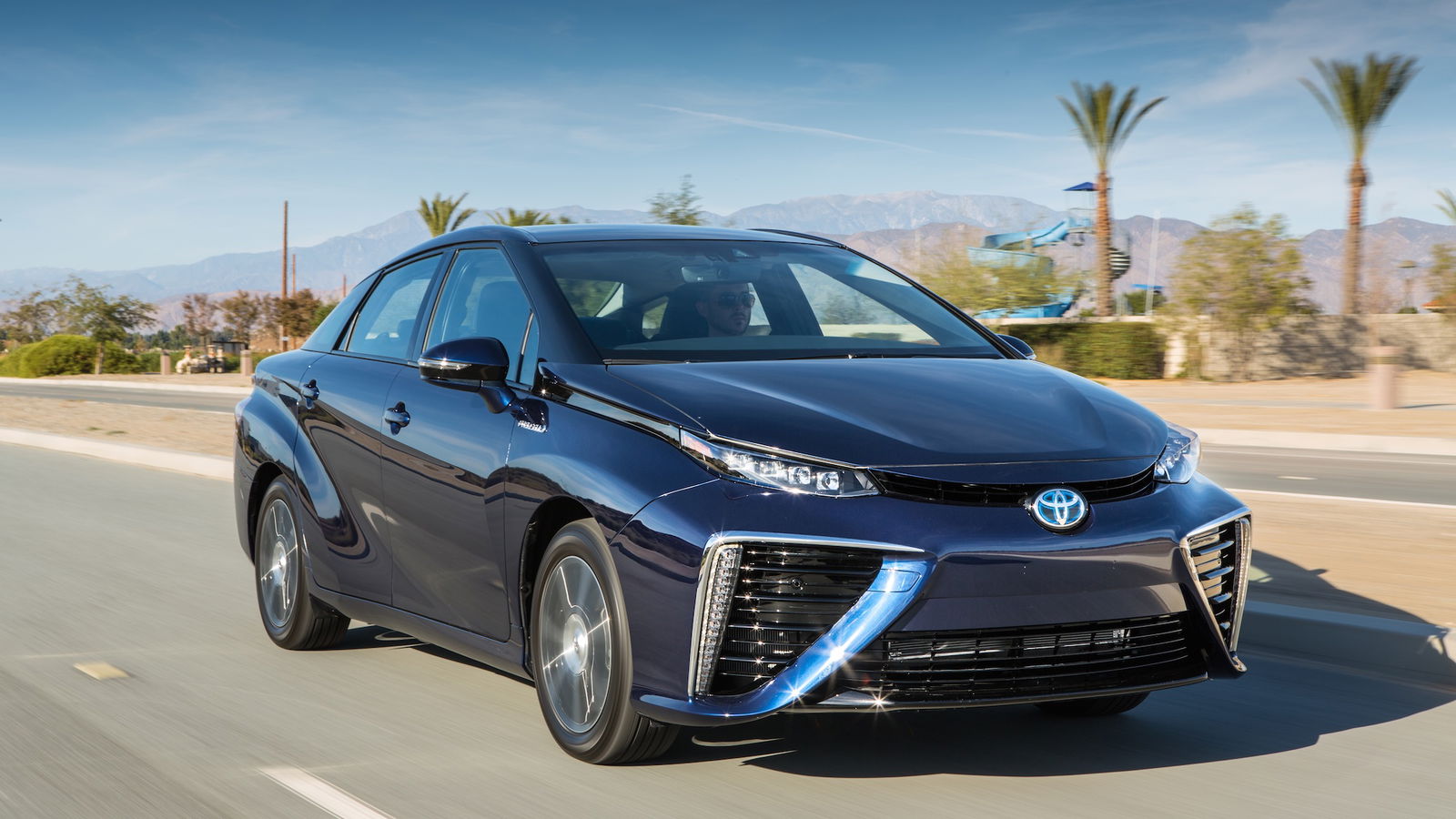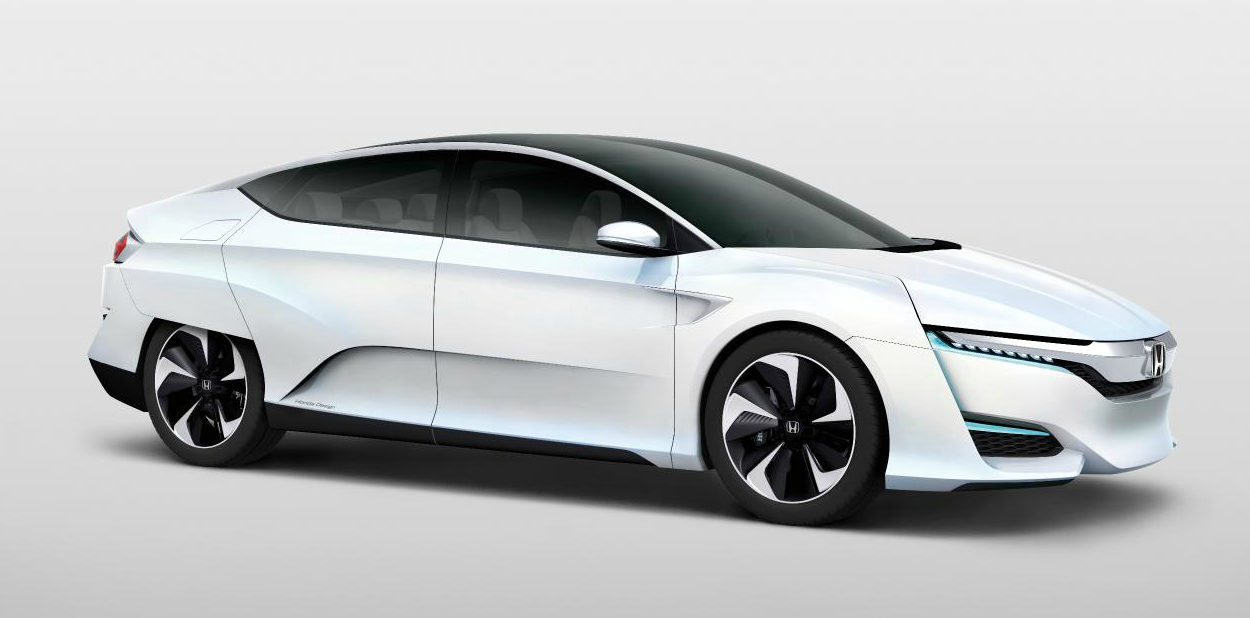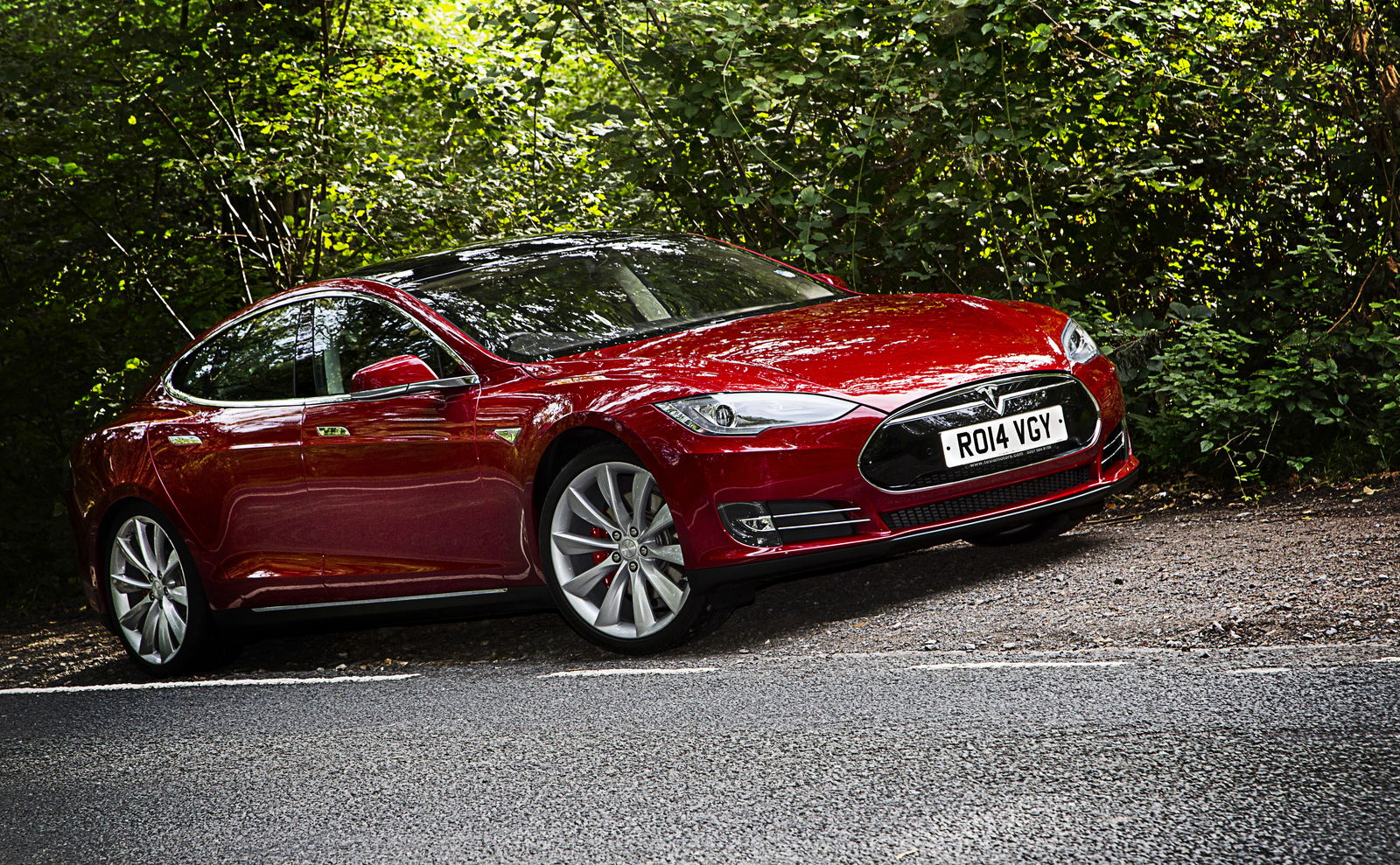Why The Hydrogen Onslaught At The LA Motor Show Is A Sign Of Things To Come

We all love the internal combustion engine. We’ve grown up listening to the sound of those tiny explosions created through the suck, squeeze, bang, blow process. But it’s on its way out.
Even the most hardened anti-Prius petrolhead has to accept that not only are we running out of fuel (with legislators slow to push alternative means of powering national grids), but the general public is fed up with choking on exhaust fumes. And the LA motor show is the first sign that a proper alternative fuel is on the horizon: hydrogen.

There have been plenty of hydrogen concept cars in the past, but 2014 appears to be the year the technology went mainstream. Toyota, Honda, Audi and Volkswagen all revealed models, with rumours of a BMW ‘i5’ car on the horizon using the collaboration with Toyota to borrow fuel cell technology.
The Toyota Mirai (Japanese for ‘future’) will be the first hydrogen-fuelled production vehicle when it goes on sale in limited numbers next year. It’s pretty ugly, but on the plus side Toyota boss Akio Toyoda has as good as acknowledged many Toyotas are uninspiring to drive, so he’s personally overseen the dynamic development of the car. We’ll hold off judgement until we drive it, but fingers crossed it won’t be as soul-destroyingly boring as the Prius.
For a manufacturer such as Toyota to turn to hydrogen when it already makes a killing through petrol-electric hybrids is telling. So what does hydrogen have over pure electric? For a start, refuelling is as quick and simple as it is with current fuels - simply plug the hose in and three minutes later you’re topped up. According to Toyoda, the hydrogen pumped into vehicles can be made from virtual anything, “even garbage.”
How does a hydrogen-powered car work?
When you pump hydrogen into the vehicle it is stored in carbonfibre fuel tanks. While driving, the front air intake channels air towards the fuel cell stack, as hydrogen is pumped to the same location. A chemical reaction takes place between the hydrogen and the oxygen in the air, and you have electricity that powers the motor with nothing but water as a by-product.
Another plus point is range. On top of the fact refuelling is simpler, each tank gets you further than it would in an electric car. Toyota reckons over 300 miles per tank, a little further than a Tesla Model S and a lot more than your typical electric car’s range. But there’s a problem: infrastructure.

Even without Tesla’s special Supercharger stations, an electric car can be plugged in anywhere (with any electricity outlet) - if you don’t mind the long wait. Hydrogen stations are few and far between, and that’s going to be something which puts off a lot of potential customers. But with any new technology there are teething problems, and manufacturers will no doubt be pushing for the building of hydrogen stations imminently so everything’s in place when these cars roll out.
With some big names finalising hydrogen cars, with their no-compromises, guilt-free motoring implications, it won’t be long before competitors are clamouring to catch up. And if there’s one thing competition can breed, it’s innovation. Watch this space.

Comments